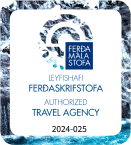If you're lucky enough to snag a permit, the experience is truly once-in-a-lifetime. The landscape feels otherworldly, and the solitude you’ll find—especially if you start early—is beyond rewarding. Just be prepared, hike smart, and tread lightly in one of the most fragile and spectacular places on Earth.
Coyote Buttes North (The Wave) & Coyote Buttes South – Paria Canyon–Vermilion Cliffs Wilderness
Coyote Buttes North—home to the world-famous Wave—and its equally surreal neighbor, Coyote Buttes South, are two of the most visually stunning destinations in the American Southwest. Both areas are tucked within the 112,500-acre Paria Canyon–Vermilion Cliffs Wilderness, straddling the Arizona–Utah border. Their swirling, multicolored Navajo sandstone formations, dramatic ridgelines, and alien-like textures make them top bucket-list spots for hikers, photographers, and adventurers alike.
Access to these fragile landscapes is highly regulated by the Bureau of Land Management (BLM) in order to protect the wilderness character and prevent erosion and overuse. Permits are required for both North and South Coyote Buttes—there are no developed trails, signage, or facilities, so you’ll need to come prepared to navigate through remote and undeveloped terrain.
How to Get a Permit:
Coyote Buttes North (The Wave): Access is extremely limited, with only 64 people allowed per day (48 via the online advance lottery, and 16 through the daily geofence lottery).
Permits are $9 to enter the lottery, and if selected, $7 per person and per dog.
Dogs are allowed, but must be added to your permit, and it’s strongly not recommended to bring them during the summer months (June–August) due to extreme heat, lack of shade, and potential for rattlesnake encounters.
The Hike:
The route to The Wave is a 6.4-mile round-trip hike across slickrock, sand, and exposed desert terrain. There are no marked trails, so excellent navigation skills are essential. You’re expected to use wayfinding and GPS tools, and you are entirely responsible for your own safety. Hiking here is no joke—this is real backcountry.
Download offline maps ahead of time (AllTrails, Gaia, OnX), or bring a GPS device like a Garmin InReach or GPSMAP.
Start hiking 2–3 hours before sunrise to beat the desert heat and have The Wave all to yourself in perfect morning light.
There are no water sources along the route, so pack more water than you think you'll need.
You’ll encounter steep inclines, sandy washes, and rugged terrain—be sure that all members of your group are physically capable and prepared for desert conditions.
Travel Tips:
4WD is highly recommended for accessing both areas, especially after rain.
Cell service is almost non-existent, so have all maps and routes downloaded beforehand.
If you're entering the geofence lottery, you must be within a defined GPS boundary zone near Kanab or Page to apply 48 hours in advance.
Summer hiking is risky due to high temps—winter, fall, and early spring are the best seasons for safer and more comfortable conditions.
Flash floods are a danger in monsoon season (July–September), especially in low-lying wash areas.
Where to camp
Stateline Campground (BLM)
Located on the Utah-Arizona border at the end of House Rock Valley Road, does tend to fill up quick on weekends and busy season
7 basic campsites with picnic tables and fire rings
Vault toilet, but no water or trash service
First-come, first-served
Less than 15 minutes to Wire Pass Trailhead
Kanab, Utah
Closest town with full-service campgrounds and lodging (about 45 minutes north)
Options include:
J&J RV Park
Crazy Horse RV Campark
Hitch-N-Post RV Park
All offer showers, hookups, tent sites, and pet-friendly policies
Page, Arizona
About an hour from The Wave
Larger town with multiple camping/RV parks:
Wahweap Campground (near Lake Powell)
Lone Rock Beach (BLM) – dispersed camping right on the lake shore


























